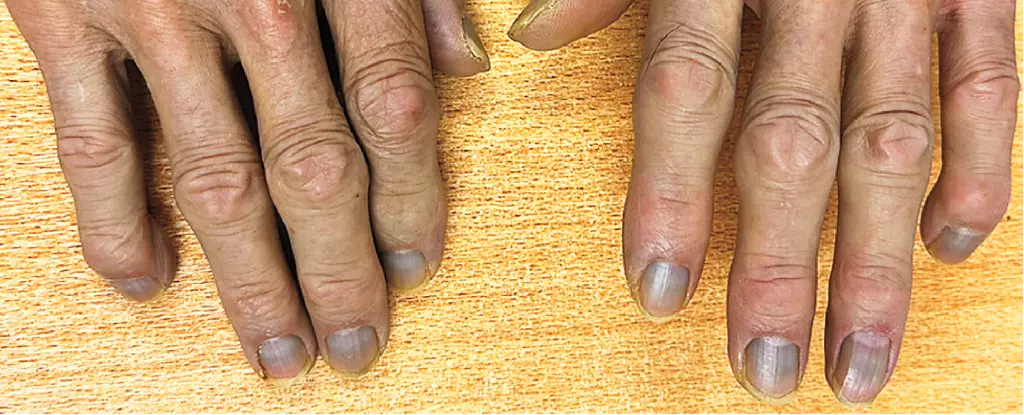Argyria is a rare condition that manifests as a bluish-gray discoloration of the skin and other tissues. While it draws attention due to its distinct visual symptoms, the underlying cause is often puzzling to healthcare providers. This was highlighted in the case of an 84-year-old man from Hong Kong who presented to medical professionals with urinary flow obstruction but ended up revealing an unexpected diagnosis. His case serves as a stark reminder of the complexities surrounding heavy metal exposure and its consequences, particularly in the realm of silver accumulation, which seems to be increasingly prevalent in various applications, from industrial use to medical treatments.
Over the past few decades, the interest in silver as an antimicrobial agent has soared, leading to its incorporation into a plethora of products. Despite the lack of rigorous scientific backing for its efficacy, colloidal silver has gained traction among those seeking alternative remedies. This phenomenon can largely be attributed to a cultural fascination with “natural” solutions, often leading people to overlook the potential dangers of misusing such substances.
The elderly patient’s case is particularly intriguing due to the juxtaposition of his occupational background as a waiter with the significant silver levels detected in his bloodstream—more than 40 times the normal concentration. Generally, professionals who come into regular contact with silver, such as miners or metal artisans, are the most susceptible to developing argyria. However, the man’s profession did not suggest any direct exposure to the metal in any notable form. His lifestyle and environmental factors, including the absence of similar symptoms in his community, further complicated the search for the source of his condition.
In healthcare, these multifaceted aspects necessitate a thorough investigative approach. Laboratory diagnostics revealed that the silver in his system was likely not due to external environmental factors but rather could have been systemic absorption from prolonged or improper use of silver-based medications or supplements. This reflects a critical gap in public awareness, where individuals may unwittingly expose themselves to harmful amounts of metals masked under the guise of ‘health benefits.’
While argyria itself poses predominantly cosmetic issues—with the ashen skin color representing the most visible symptom—it raises concerns regarding its long-term health implications. The patient’s condition might not impair major bodily functions significantly; however, it does prompt discussions about the potential physiological ramifications of heavy metal accumulation. In some cases, significant buildup could interfere with absorption rates of antibiotics and essential medications like thyroxine.
Consequently, it becomes imperative for medical practitioners to consider not only the cosmetic impacts of such conditions but also the broader context of patient health management. With current medical understanding, there exists no definitive treatment or procedure to reduce silver levels in the human body. This situational stagnation presents an additional challenge for healthcare providers tasked with safeguarding patient welfare against unintended side effects of alternative treatments.
The case of the 84-year-old man from Hong Kong emphasizes the notion that practitioners must remain vigilant regarding the potential harmful effects of seemingly benign treatments. As silver continues to be marketed widely in various forms, the potential for systemic absorption and subsequent health issues calls for increased public education and policy regulation concerning its use.
Overall, while the man’s case may conclude with an innocuous outlook as his vital health remains intact, the riddles surrounding the origins of his condition remain unresolved. The lesson gleaned from this experience is not just about the need for more scientific research regarding colloidal silver and its effects but also the crucial responsibility of consumers to safeguard their health by staying informed and wary of unregulated remedies. The world of health supplements can indeed intersect perilously with medical science, necessitating a cautious and educated approach.

Leave a Reply